Last updated on
Discover the most effective ways to conceal your kitchen vent pipe, transforming your cooking space into a sleek and stylish oasis.
The kitchen is the heart of any home, where delicious meals are cooked and memories are made. However, it’s also one of the most challenging places to decorate due to the presence of functional elements like vent pipes that can stick out like a sore thumb.
If you’re struggling with an unsightly kitchen vent pipe ruining your decor, don’t worry! In this article, we’ll show you some creative ways to conceal it without sacrificing style or functionality. From simple DIY solutions to professional installations, we’ve got you covered.
So let’s dive in and learn how to hide that pesky kitchen vent pipe once and for all!
Key takeaways:
- Understand the purpose and function of a kitchen vent pipe.
- Assess the location of the vent pipe to determine the best concealment method.
- Measure the dimensions of the vent pipe accurately for effective concealment.
- Plan the concealment process considering design aesthetics, safety, and accessibility.
- Choose appropriate materials such as drywall, wood paneling, metal sheets, or wallpaper for concealment.
What's Inside
Understanding Kitchen Vent Pipes
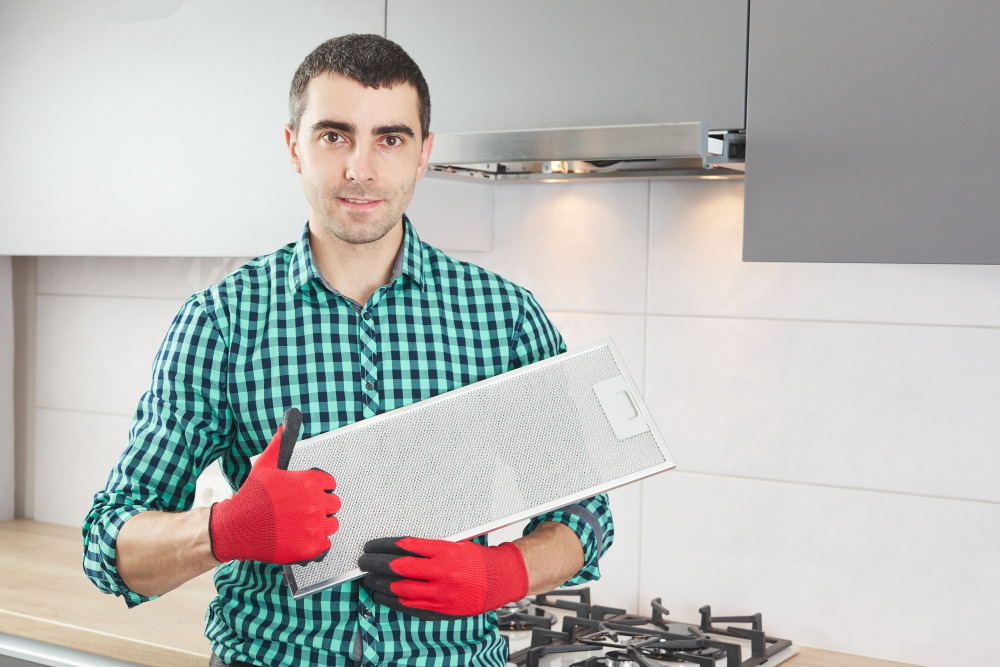
Before we dive into the various ways to hide your kitchen vent pipe, it’s essential to understand what it is and why it’s necessary. A kitchen vent pipe is a duct that connects your range hood or exhaust fan to the outside of your home.
Its primary function is to remove smoke, steam, and cooking odors from the air in your kitchen while also preventing grease buildup on surfaces.
Vent pipes come in different sizes and shapes depending on their location within the house. They can be made of metal or plastic materials with varying thicknesses for durability purposes.
While they are functional elements that play an important role in maintaining good indoor air quality, they can often be unsightly when left exposed. Fortunately, there are several creative ways you can conceal them without compromising their functionality or safety.
Assessing Vent Pipe Location
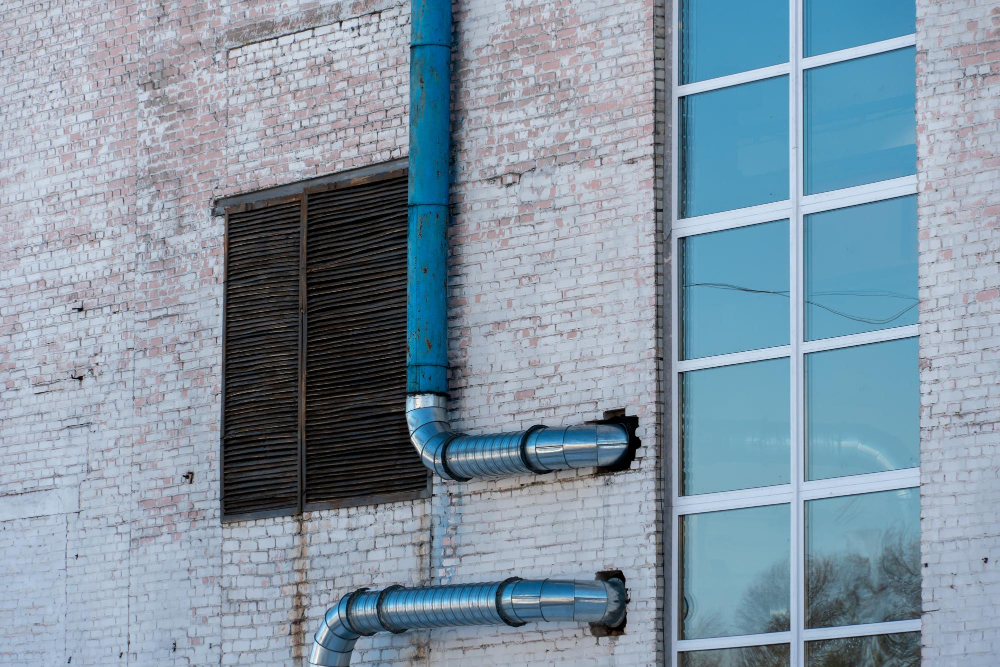
The position of the vent pipe will determine which concealment method you can use and how much work it will take. Start by identifying where the vent pipe is located in your kitchen, whether it’s on an exterior wall or running through a soffit or ceiling.
Once you’ve identified the location, consider how visible the vent pipe is from different angles and areas of your kitchen. Is it obstructing any views? Does it clash with other design elements like cabinets or countertops? These are important factors to consider when planning for concealment.
Another consideration when assessing vent pipe location is safety. Make sure that any concealment method does not interfere with proper ventilation and airflow, as this could lead to dangerous situations such as carbon monoxide buildup.
Measuring Vent Pipe Dimensions

This step is crucial in determining the materials and methods that will be used to conceal it effectively. Measuring a vent pipe can be tricky, especially if it has an irregular shape or is located in a hard-to-reach area.
To get started, use a measuring tape or ruler to determine the diameter of your vent pipe at its widest point. If you’re dealing with an oval-shaped duct, measure both the width and height at their maximum points.
Next, take note of any bends or curves along the length of your vent pipe as these will affect how much material you’ll need for concealing them properly.
It’s also essential to consider clearance requirements when measuring your kitchen vent pipes’ dimensions. Ensure there is enough space between any concealed materials and other elements like cabinets or walls for proper ventilation flow.
Planning the Concealment Process
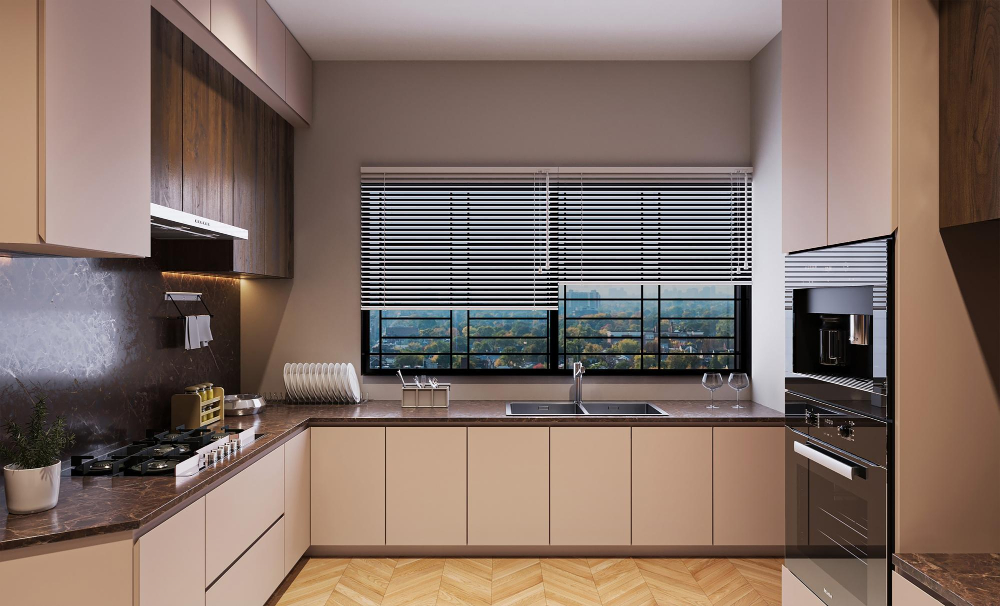
This step is crucial as proper planning will ensure that your concealment solution not only looks great but also functions effectively.
Start by considering the overall design aesthetic of your kitchen. Do you want a seamless look or something more decorative? Will concealing the vent pipe require major renovations or can it be done with simple DIY solutions?
Next, consider any safety concerns related to hiding a vent pipe. Ventilation is essential in any kitchen, so make sure that whatever method you choose doesn’t impede airflow or create potential fire hazards.
Think about practicality and accessibility when planning how to hide your vent pipe. You don’t want to create an obstacle for cleaning or maintenance purposes.
Choosing Suitable Materials
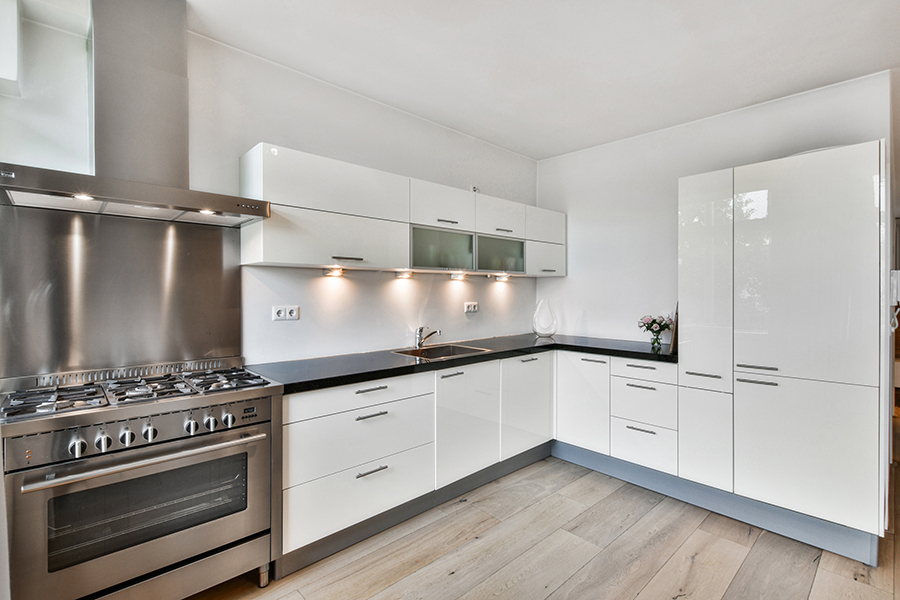
The material you select will depend on your budget, personal style, and the level of concealment required.
One popular option is to use drywall or plasterboard. This material can be easily cut to size and painted over once installed.
It provides a seamless finish that blends in with the rest of your walls.
Another option is wood paneling or beadboard. These materials add texture and warmth to any space while providing excellent coverage for unsightly pipes.
For those who prefer a more industrial look, metal sheets such as stainless steel or copper can be used as an accent piece around the vent pipe area.
If you’re looking for something more decorative than functional, wallpaper could also do wonders in hiding kitchen vent pipes while adding personality into space.
Painting Vent Pipes

Painting your vent pipe can help it blend in with the surrounding walls or ceiling, making it less noticeable. However, before you start painting, make sure that you clean the surface thoroughly and remove any rust or debris using sandpaper.
When choosing paint for your vent pipe, opt for high-heat resistant paint as this will prevent peeling or cracking due to heat exposure from cooking activities. You can also choose a color that matches your kitchen’s decor theme so that the painted vent blends seamlessly into its surroundings.
While painting may be an easy DIY solution to concealment of a kitchen vent pipe, keep in mind that this method only works if you have enough clearance around the pipes and they are not too close together. If there isn’t enough space between them for proper ventilation after being painted over then other methods such as installing decorative covers might be more suitable options.
Installing Decorative Covers
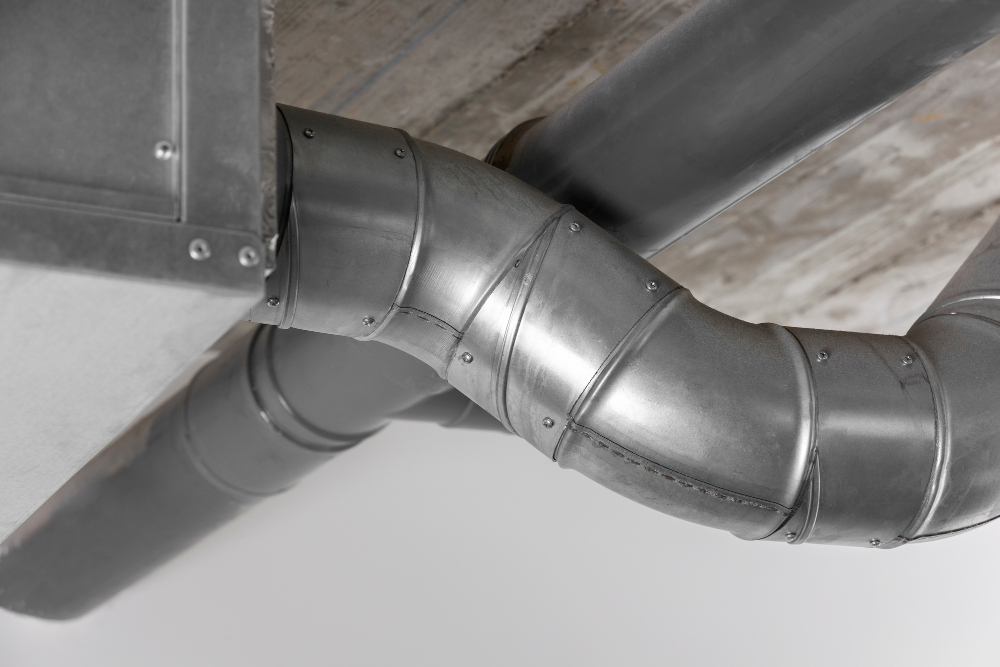
These covers come in various materials, including wood, metal, and plastic. They are easy to install and can be customized according to your kitchen’s design theme.
To install a decorative cover over your vent pipe, you will need to measure the dimensions of the pipe accurately. Once you have these measurements, select a cover that fits snugly over it without leaving any gaps or spaces.
Decorative covers can be installed using screws or adhesive tape depending on their weight and size. If you’re unsure about how best to secure them in place safely, consult with an expert for guidance.
One advantage of installing decorative covers is that they add aesthetic value while also hiding unsightly pipes from view. You can choose from different designs such as floral patterns or geometric shapes that complement your existing decor style.
However, keep in mind that some types of decorative covers may restrict airflow through the vent pipe if not correctly installed; this could lead to ventilation problems within your home’s cooking area.
Use Soffits or Columns
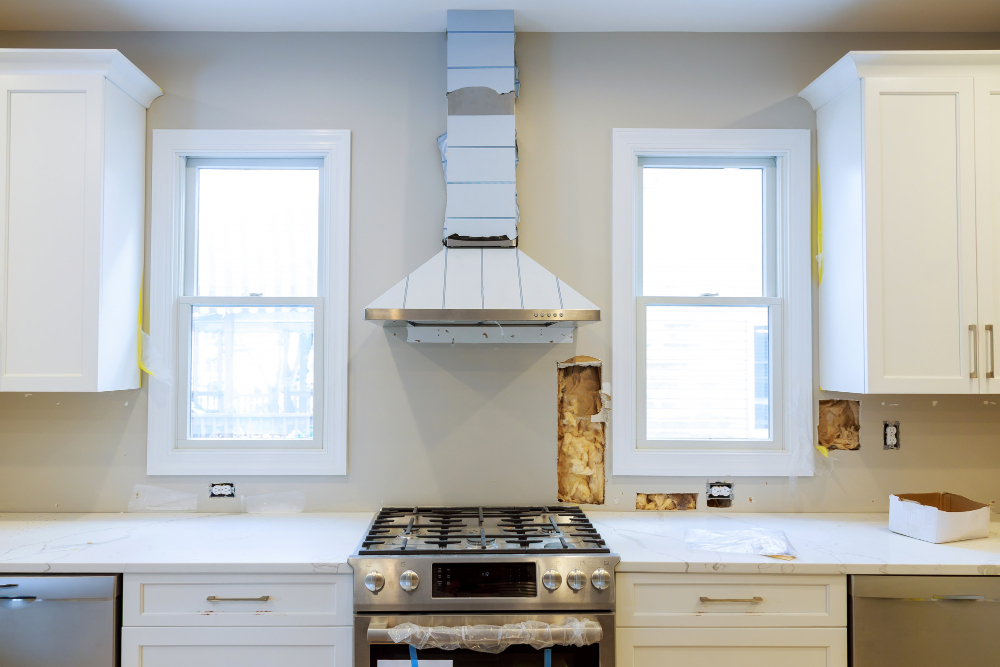
Soffits are box-like structures that cover the area around the vent pipe, creating a seamless transition between the ceiling and cabinets. They can be made from drywall or wood, depending on your preference.
Columns, on the other hand, provide an architectural element that adds character to any kitchen design. They can be used as decorative features or functional elements like support beams for countertops.
When using soffits or columns to hide your kitchen vent pipe, it’s essential to consider their size and placement carefully. The goal is not only to conceal but also enhance visual appeal without making them look out of place.
For instance, if you have high ceilings in your kitchen space with ample room above cabinetry units; you may opt for tall columns that reach up towards those heights rather than shorter ones which might appear awkwardly placed within such vast spaces.
Installing False Cabinets
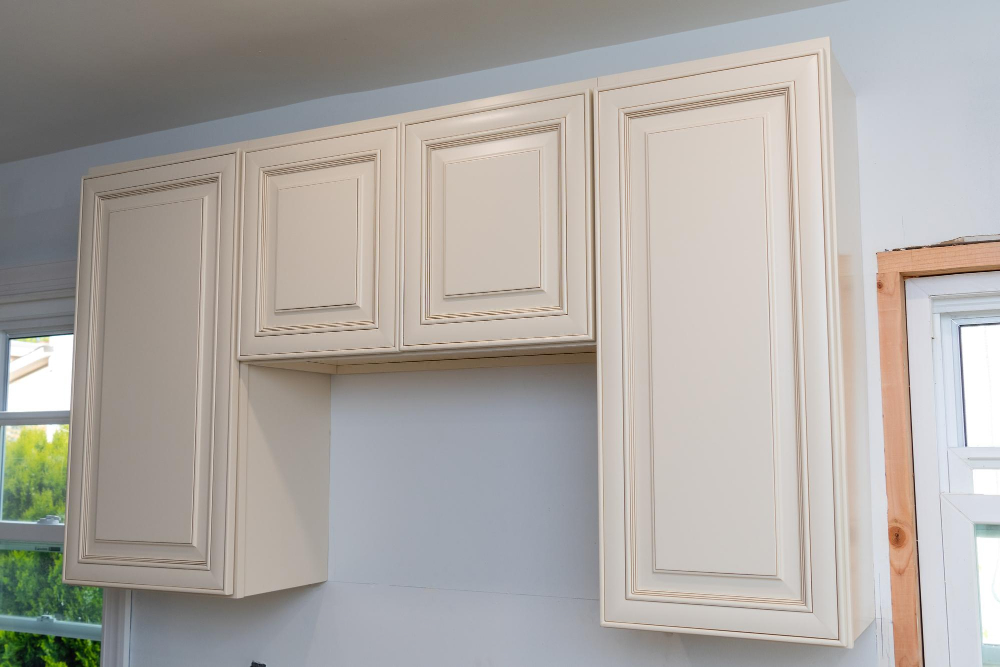
This method involves creating a cabinet-like structure around the vent pipe, which can be customized to match your existing cabinetry or designed as an accent piece that adds character and charm to your kitchen.
To install false cabinets, you’ll need basic carpentry skills and tools such as a saw, drill, screws/nails, wood glue and clamps. Start by measuring the dimensions of your vent pipe carefully so that you can create an accurate plan for building the cabinet structure.
Next up is selecting suitable materials for constructing these faux cabinets. You may use MDF (medium-density fiberboard), plywood or solid wood depending on budget constraints and personal preferences.
Once you have all necessary materials in place it’s time to start building! Cut out pieces according to measurements taken earlier then assemble them using nails/screws/glue/clamps until they form into desired shape/size/designs etcetera before attaching hinges/handles/pulls if needed – this will give them more realistic look like actual cabinetry!.
Decorative Trim or Molding
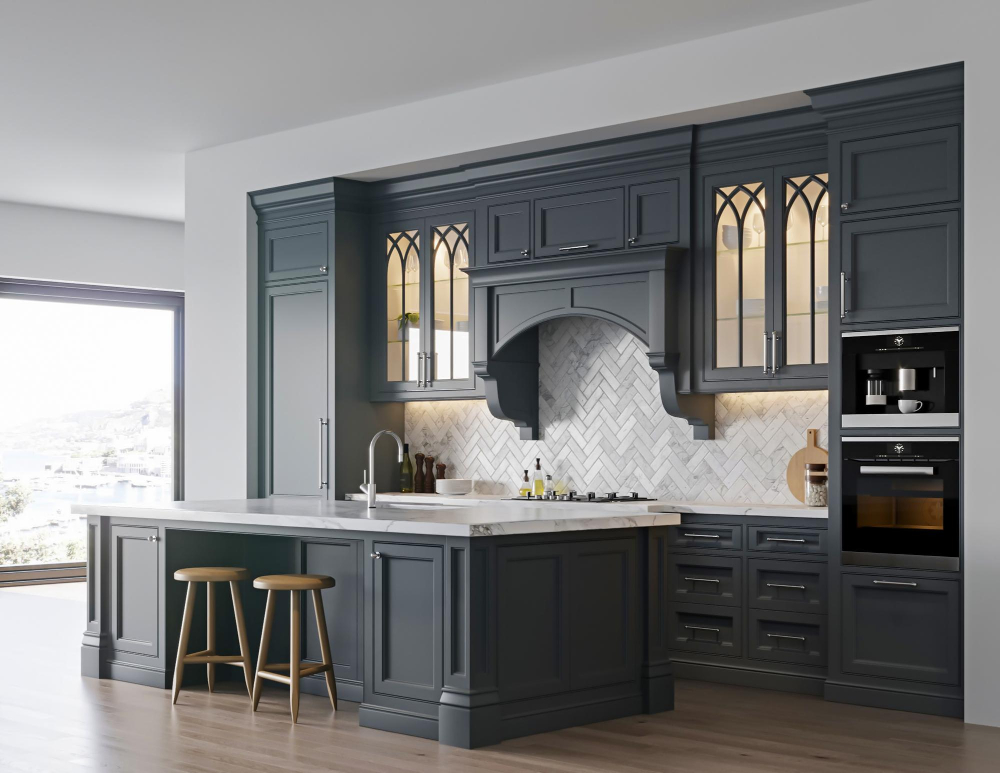
With the right trim or molding, you can create a seamless transition between the vent pipe and your ceiling, making it look like it was always meant to be there.
When choosing decorative trim or molding for this purpose, consider the style of your kitchen. If you have a modern design scheme with clean lines and minimalistic features, opt for simple crown molding that blends in seamlessly with your ceiling.
On the other hand, if you have a more traditional decor style with ornate details and intricate patterns throughout your home’s interior design elements such as wainscoting could work well.
You can also choose from various materials such as wood or plaster depending on what suits best in terms of durability requirements & budget constraints.
Building Custom Cabinetry
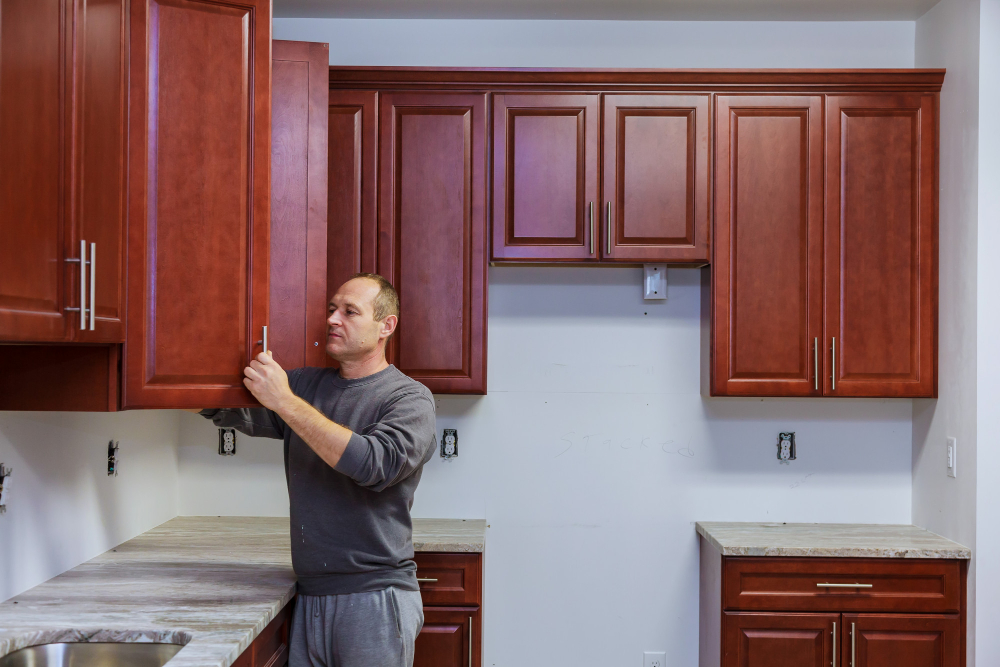
This method involves creating a cabinet that fits perfectly around the vent pipe and blends seamlessly with the rest of your kitchen decor.
To build custom cabinetry, you’ll need to measure the dimensions of your vent pipe carefully. Then, design a cabinet that will fit snugly around it while still allowing proper ventilation.
Once you have designed and measured everything correctly, it’s time to start building! You can either hire a professional carpenter or take on this project as DIY if you have some woodworking skills. Building custom cabinets requires precision cutting and fitting pieces together like puzzle pieces.
The final result will be worth all the effort because not only does it conceal unsightly pipes but also adds extra storage space in your kitchen!.
However, keep in mind that this method may require significant investment both financially and time-wise compared to other options discussed earlier. So make sure this is something within budget before embarking on such an endeavor.
Installing A Soffit
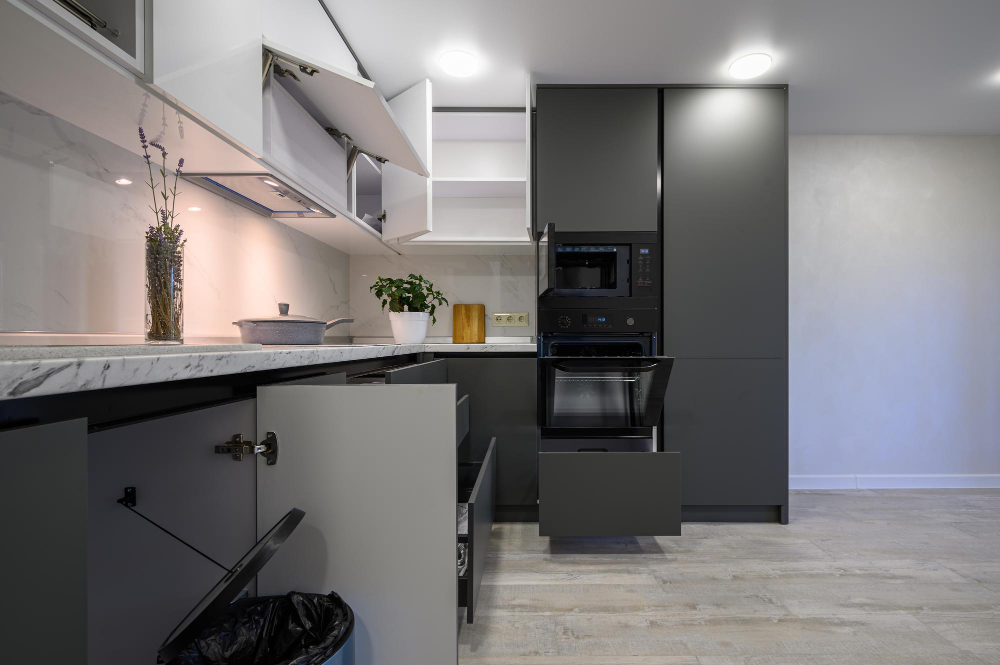
A soffit is essentially an enclosed box that runs along the ceiling and covers up unsightly pipes or ductwork. It’s important to note that this method requires some carpentry skills and experience with electrical work if there are light fixtures involved.
To install a soffit, start by measuring the length of your vent pipe and determining how much space you’ll need for clearance around it. Next, create an outline of where you want your soffit to be installed on the ceiling using chalk or painter’s tape.
Once you have determined where it will go, build out wooden framing in those dimensions from 2x4s or other suitable materials like MDF board (medium-density fiberboard). Then attach drywall sheets over them using screws before finishing off with paint or wallpaper as desired.
It’s essential not only for aesthetics but also safety reasons when hiding kitchen ventilation systems behind walls/ceilings because they can become fire hazards if not properly ventilated.
Vent Pipe Wallpaper Solutions
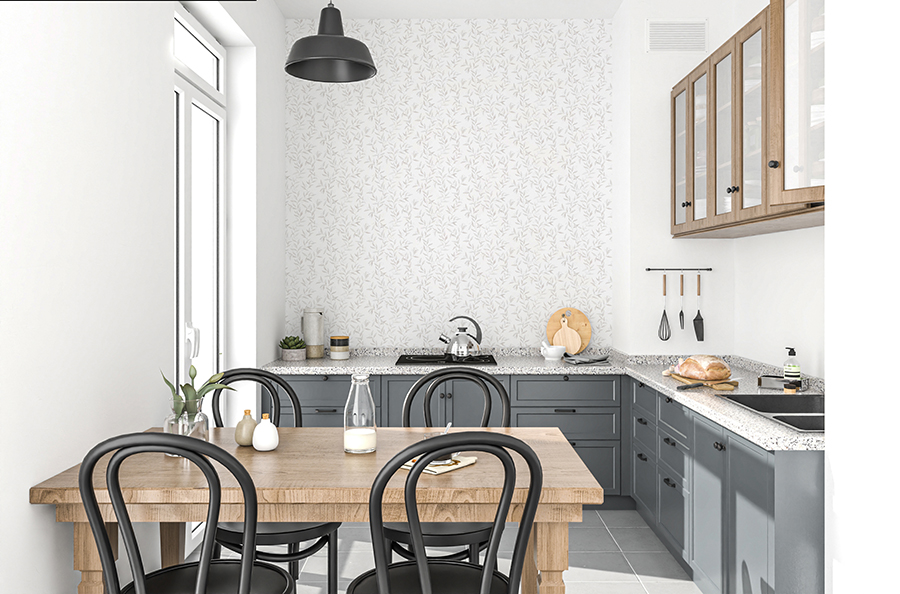
Wallpaper is an excellent option because it’s affordable, easy to install, and comes in various designs that can complement any kitchen decor. You can choose from different patterns like floral prints or geometric shapes or opt for textured wallpapers like grasscloth or faux brick.
Before installing the wallpaper on your vent pipe, ensure that you clean it thoroughly with soap and water to remove any dirt or grease buildup. Once dry, measure the dimensions of your vent pipe accurately so that you purchase enough wallpaper.
When applying the wallpaper onto your vent pipe surface area using adhesive glue (ensure not too much), start at one end of the tube while smoothing out air bubbles as they appear along its length until reaching another end. Trim off excess paper using a sharp blade once done.
Using Magnetic Covers
These covers come in various sizes and designs, allowing you to choose one that matches your kitchen’s decor seamlessly. They’re easy to install and remove, making them perfect for renters or anyone who wants a temporary solution.
To use magnetic covers, all you need is a clean surface on the vent pipe. Simply place the cover over the pipe and let it attach itself with its strong magnets.
Magnetic covers can be made of different materials like stainless steel or powder-coated aluminum.
One advantage of using magnetic covers is that they don’t require any special tools or skills to install them; just make sure your chosen cover fits snugly over your vent pipe opening before purchasing it.
However, keep in mind that these types of solutions may not work well if there’s too much heat coming from the exhaust system as some materials might melt under high temperatures.
Creating Faux Ceiling Beams
These beams are made of lightweight materials like foam or wood and come in various sizes and finishes. They add depth and character to the room while also providing a practical solution for concealing unsightly pipes.
To create faux ceiling beams, start by measuring the length of your vent pipe so that you can determine how many beams you’ll need. Next, choose the material that best suits your decor style – wood is perfect if you want an authentic look while foam is ideal if weight is a concern.
Once you have all the necessary materials on hand, it’s time to install them! Begin by attaching one end of each beam securely to either side of your kitchen ceiling using screws or nails. Then slide them over top of your vent pipe until they cover it completely.
Secure both ends with screws or nails again before painting/staining as desired!.
Utilizing Tall Indoor Plants

Not only do they add a touch of greenery to your space, but they also help purify the air in your kitchen. Choose plants that can grow up to 6 feet or more and place them strategically around the vent pipe area.
Tall indoor plants like fiddle leaf figs, snake plants, rubber trees or bird of paradise are great options as they have large leaves that can cover up unsightly pipes while adding visual interest and texture. You could also use hanging planters with trailing vines such as pothos or philodendron which will drape over the pipes creating an organic look.
When choosing pots for these tall indoor plants make sure it’s proportionate in size so it doesn’t overwhelm the space but rather complements it. Ensure that you choose pots with drainage holes at their base so water doesn’t accumulate around the base of each plant causing damage.
Hanging Artwork or Tapestries
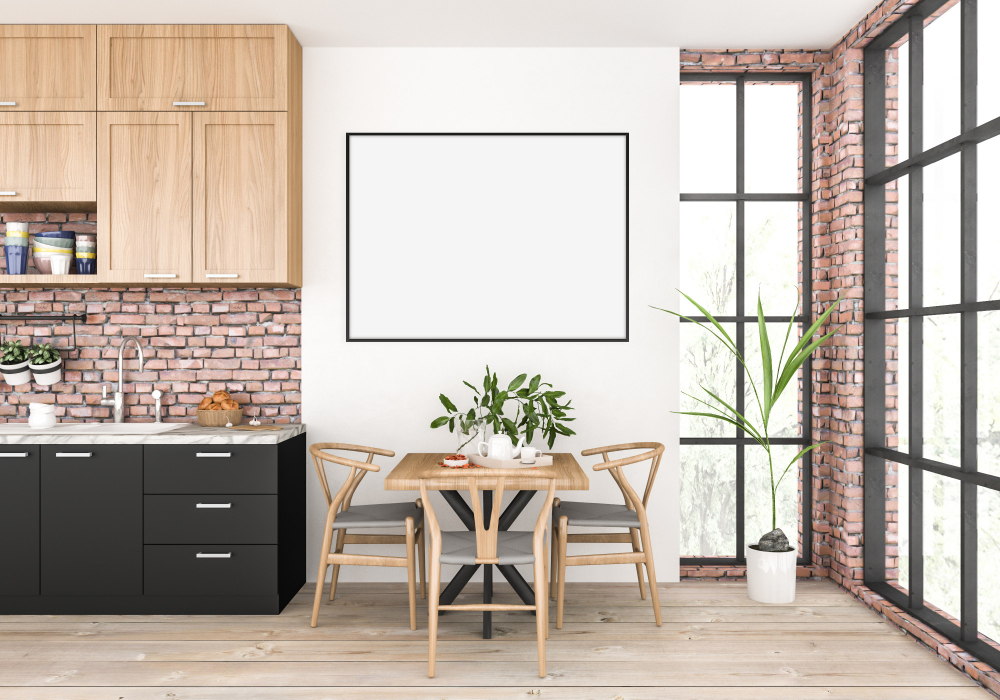
This is an excellent option if you want to add some personality and color to your kitchen while also concealing the unsightly vent pipe. You can choose from a wide range of art pieces that complement your existing decor style, such as abstract paintings, vintage posters, or even family photos.
When selecting artwork or tapestries for this purpose, it’s essential to keep in mind the size of the piece relative to the size of your vent pipe. A large painting may overwhelm a small space while a small one may not be enough coverage.
To hang artwork over your kitchen vent pipe effectively:.
- Measure both sides of the wall where you plan on hanging.
- Choose an appropriate-sized piece that will cover most (if not all) parts of the exposed ductwork.
- Use picture-hanging hardware rated for heavier items since some artworks can be quite heavy.
- Hang at eye level so that it doesn’t look out-of-place with other decorations in nearby areas.
Installing Shelving Units
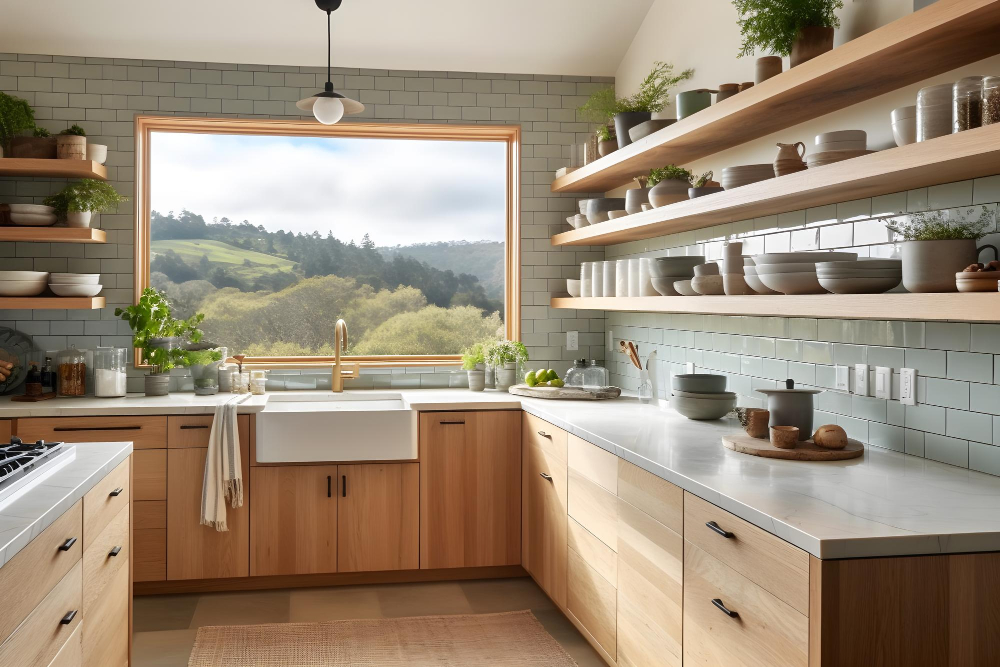
This is an excellent option if you have limited space in your kitchen or want to add some extra storage while concealing the vent pipe at the same time.
To install shelving units, start by measuring the dimensions of your vent pipe and choosing shelves that are wide enough to cover it completely. You can opt for floating shelves or brackets mounted on walls depending on what suits your style.
Once you’ve chosen suitable shelves, mount them above or beside the area where the vent pipes are located. Make sure they’re securely attached so that they don’t fall off when loaded with items.
You can also use decorative baskets or boxes placed on these shelves as additional storage options while hiding unsightly vents behind them. The best part about this solution is that it’s easy to remove should there be any need for maintenance work around those areas in future without causing damage like other permanent solutions would do.
Using Interesting Lighting Features
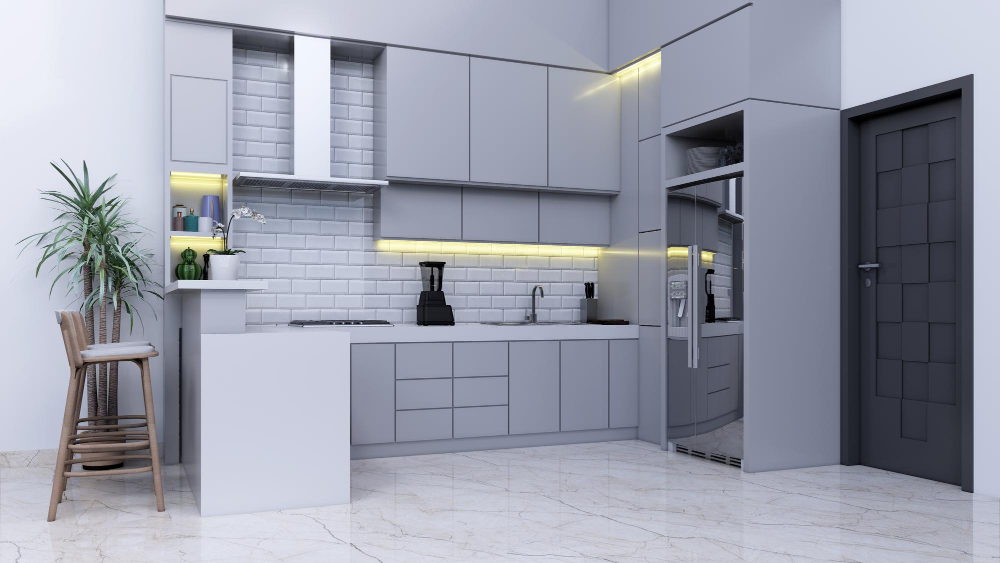
By using interesting lighting features, you can draw attention away from the vent pipe while adding ambiance to your cooking space. Pendant lights are a popular choice for kitchens and come in various styles that can complement your decor.
You could choose pendant lights with shades that match or contrast with the color scheme of your kitchen walls or cabinets.
Another option is installing under-cabinet lighting which illuminates countertops while hiding unsightly pipes above them. This type of light fixture comes in different colors and intensities, allowing you to create a warm glow or bright task lighting depending on your needs.
Recessed ceiling lights are another great way to add interest while concealing vents pipes at the same time. These fixtures blend seamlessly into ceilings without taking up much visual space but still provide ample illumination for cooking tasks.
Camouflaging With Kitchen Design

This method involves incorporating the vent pipe into your overall decor scheme, making it blend in seamlessly with other elements in your space. For instance, if you have exposed ductwork or pipes running along the ceiling, consider painting them to match your walls or adding decorative trim that complements other features in your room.
Another way to camouflage a vent pipe is by using interesting lighting fixtures that draw attention away from it. Pendant lights and chandeliers can be hung strategically over areas where vents are located so they become less noticeable.
You can also use artwork or tapestries on nearby walls as an effective distraction technique for hiding unsightly pipes and ducts. Large indoor plants placed near vents not only add visual interest but also help purify air circulating through them.
When designing around a visible kitchen vent pipe, keep color schemes simple and cohesive throughout the space so that any added elements don’t clash with each other visually.
Comparison of Methods to Hide Kitchen Vent Pipe
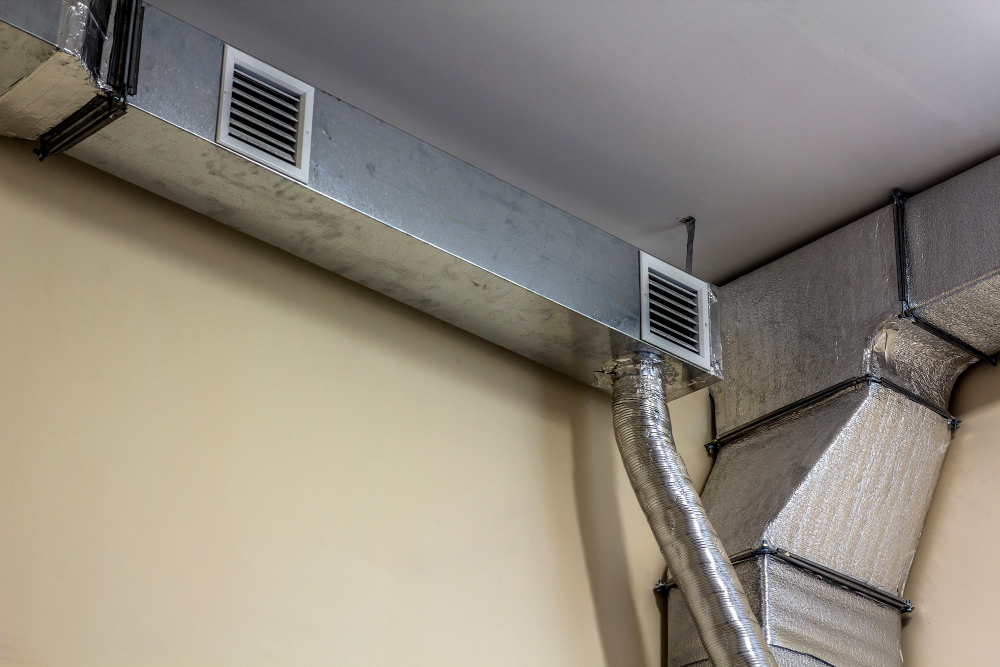
Some of these methods are simple DIY solutions that you can do yourself, while others require the help of a professional. Each method has its own benefits and drawbacks, so it’s important to consider which one is right for you.
For example, painting your vent pipe is an easy and affordable way to conceal it without spending too much money or time on the project. However, this method may not be suitable if you want a more permanent solution or if your vent pipe is located in an area where paint may not adhere well.
On the other hand, building custom cabinetry around your vent pipe can provide a seamless look that blends in with the rest of your kitchen design. This option requires more planning and investment but offers long-term durability and functionality.
Ultimately, choosing which method to use depends on factors such as budget constraints; personal preferences; location of the vent pipes; safety considerations; ventilation requirements among others.
Safety Considerations in Hiding Vent Pipes
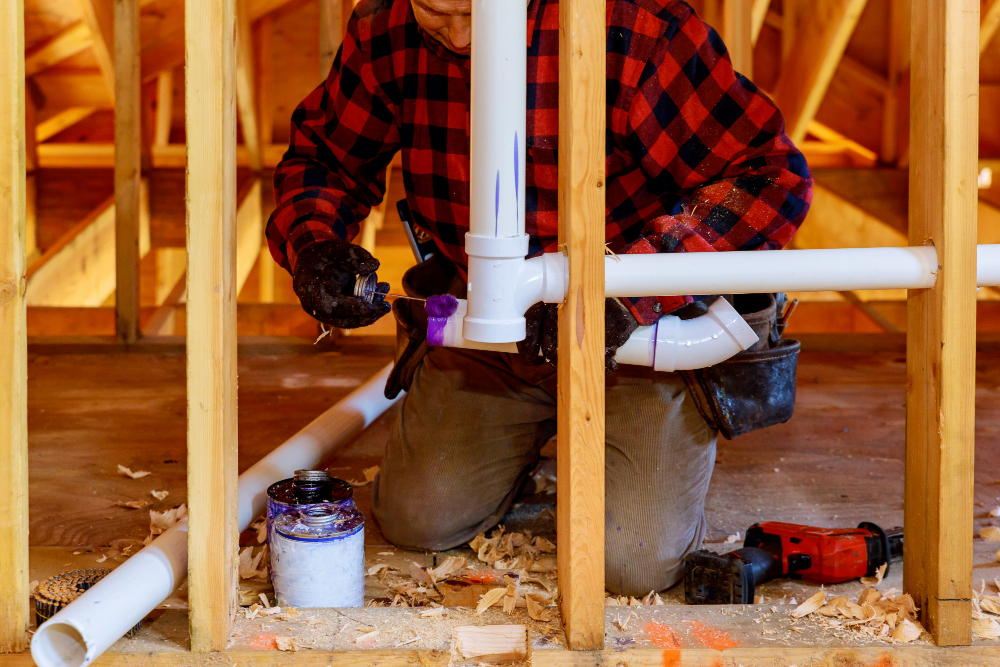
Before you start any concealment process, make sure that the vent pipe is in good condition and functioning correctly. Hiding a damaged or faulty vent pipe can lead to serious health hazards such as carbon monoxide poisoning or fire outbreaks.
Ensure that the materials used for concealing the vent pipe are heat-resistant and non-flammable. Avoid using flimsy materials like cardboard or paper which can easily catch fire when exposed to high temperatures.
It’s also essential to consider proper ventilation when hiding your kitchen’s exhaust system. A poorly ventilated concealed area may cause moisture buildup leading to mold growth and other air quality issues.
DIY or Hiring a Professional?
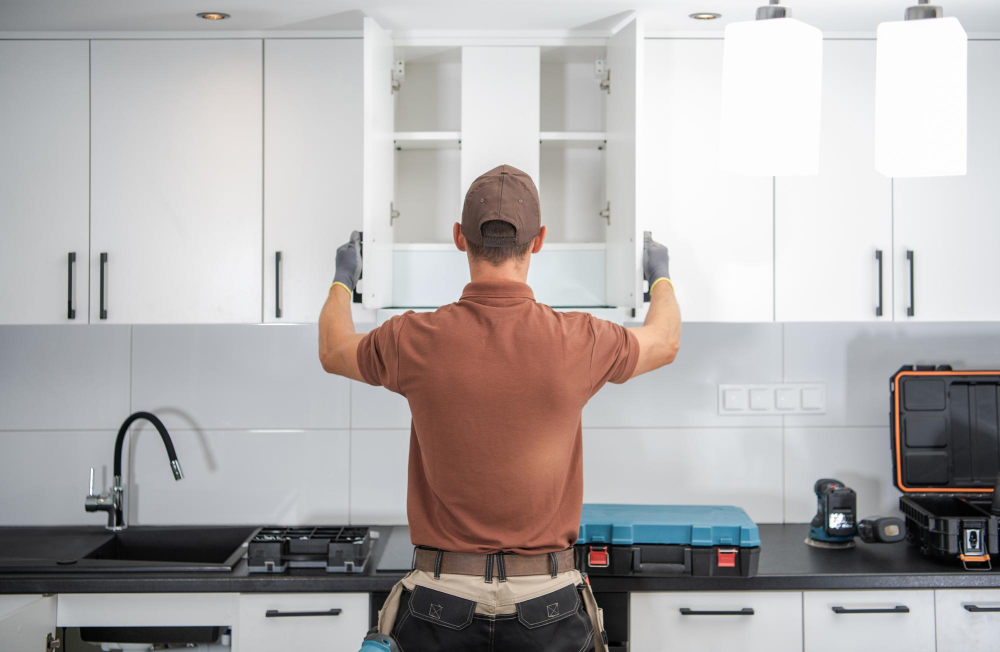
Now that you have an idea of the different ways to hide your kitchen vent pipe, you may be wondering whether to tackle this project yourself or hire a professional. While DIY solutions can save money and give you more control over the process, it’s important to consider your skill level and safety concerns before embarking on any home improvement project.
If you’re handy with tools and have experience in carpentry or construction work, then some of these ideas might be within your capabilities. However, if working with power tools is not something that comes naturally for you, it’s best to leave this task up to professionals who are trained in handling such equipment.
Moreover, certain methods like rerouting vent pipes require specialized knowledge and expertise which only licensed professionals possess. Attempting such projects without proper training could lead to costly mistakes or even pose serious risks like fire hazards.
Ultimately the decision between DIY vs hiring a professional depends on several factors including budget constraints as well as personal preferences regarding time commitment versus quality results.
Factors to Consider When Hiding a Kitchen Vent Pipe
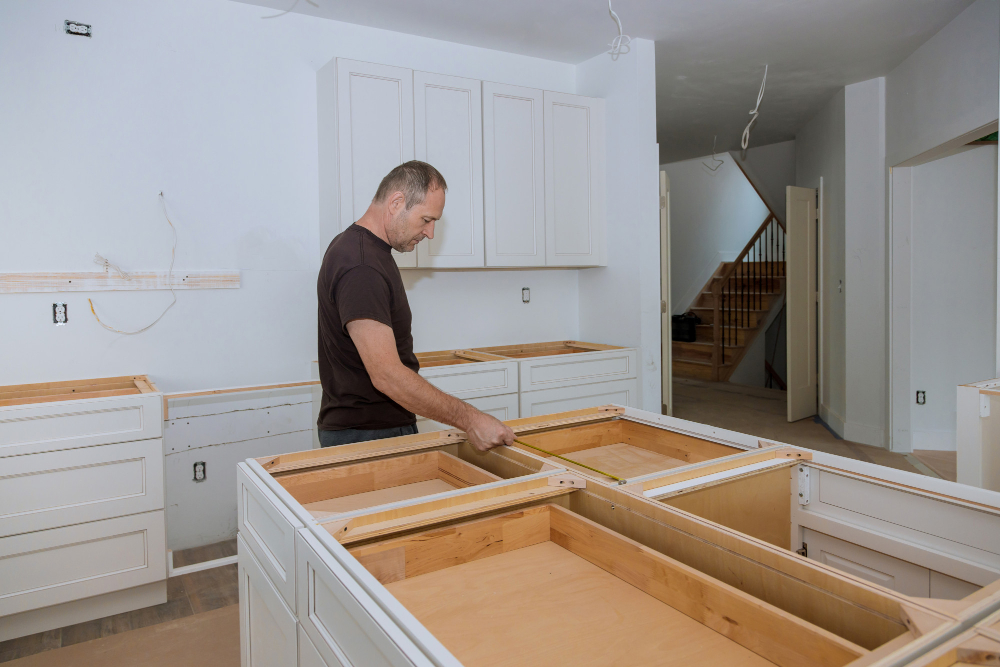
First and foremost, you need to assess the location of the vent pipe and determine if it’s possible or practical to conceal it. For example, if your vent pipe is located in an area that’s difficult or expensive to access (such as behind a load-bearing wall), then concealing it may not be feasible.
Another important factor is the size of your kitchen space. If you have a small kitchen with limited storage options, then building custom cabinetry around your vent pipe might not be practical since this could take up valuable storage space.
You also need to think about safety considerations when hiding a kitchen vent pipe. Vent pipes play an essential role in removing smoke and fumes from cooking areas; therefore, covering them up improperly can lead to ventilation problems that could pose health risks for occupants.
Lastly, budget constraints should also be taken into account when deciding on how best hide your kitchen’s ventilation system without breaking the bank.
Rerouting Vent Pipe As an Option
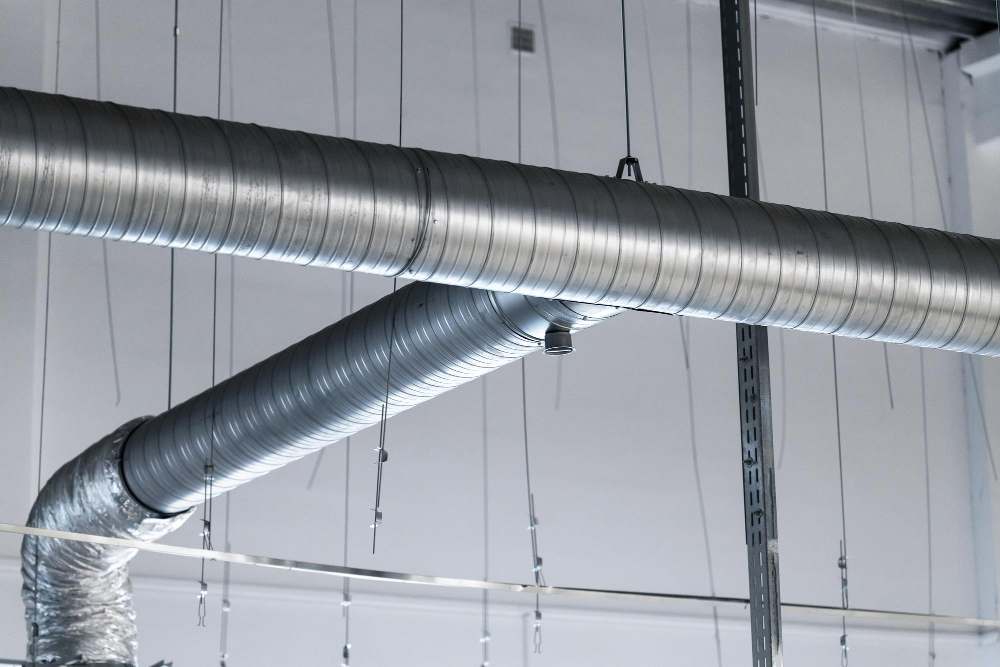
Rerouting involves moving the vent pipe to a different location in your home, such as through the roof or wall. This can be a more involved and costly process than simply concealing it with decorative elements but can provide long-term benefits for your kitchen’s ventilation system.
Before deciding on rerouting, consider factors like cost, feasibility of installation based on the layout of your home and local building codes. It is also important to consult with professionals who specialize in HVAC systems before making any changes that could impact air quality or safety.
Rerouting may not always be necessary depending on where the vent pipe is located relative to other design elements in your kitchen space. However, if you are planning major renovations that involve relocating appliances or changing layouts significantly then this might present an opportunity for rerouting as well.
Benefits and Drawbacks of Hiding Vent Pipe
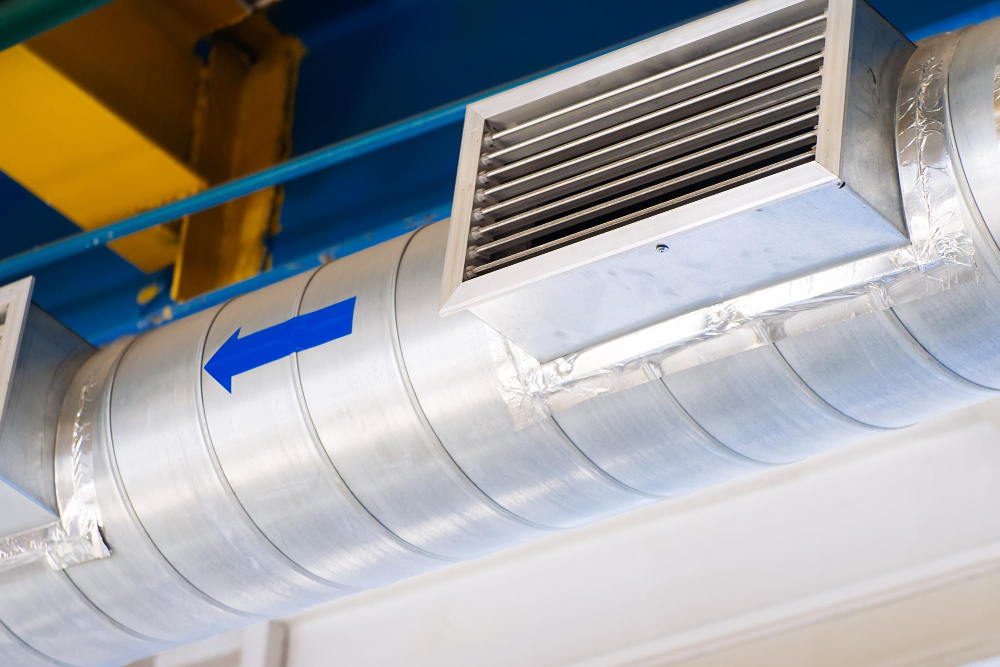
One significant advantage of concealing vent pipes is that it creates a more cohesive and polished appearance in your kitchen. By blending them into the surrounding decor, you can achieve a seamless look that enhances rather than detracts from other design elements.
However, there are also some potential drawbacks to consider when hiding vent pipes. For instance, if not done correctly or with proper ventilation considerations in mind, covering up these functional elements could lead to safety hazards such as carbon monoxide buildup or fire risks.
Depending on how you choose to conceal them (e.g., building custom cabinetry), this process may require significant time and financial investment compared with simpler solutions like using decorative covers or painting over them.
Ultimately whether you decide to hide your kitchen vent pipe will depend on various factors such as personal preference for aesthetics versus functionality needs like adequate ventilation requirements for safe cooking practices.
Considerations for Kitchen Ventilation
Ventilation is essential for removing smoke, steam, and cooking odors from your home while also preventing the buildup of harmful gases like carbon monoxide. Before you start concealing your vent pipe, make sure that you have a clear understanding of how ventilation works in your kitchen.
Consider factors such as the size and layout of your space when choosing a suitable hood fan or range hood. You’ll want to ensure that there is enough airflow capacity for effective removal of pollutants without creating too much noise or disrupting other appliances in use.
Consider whether rerouting the vent pipe may be necessary if its current location does not allow for optimal air circulation. This can be especially important if you’re planning on installing custom cabinetry around the area where the vent pipe exits.
Video Reference: Boxing in a Hood Fan Exhaust Duct
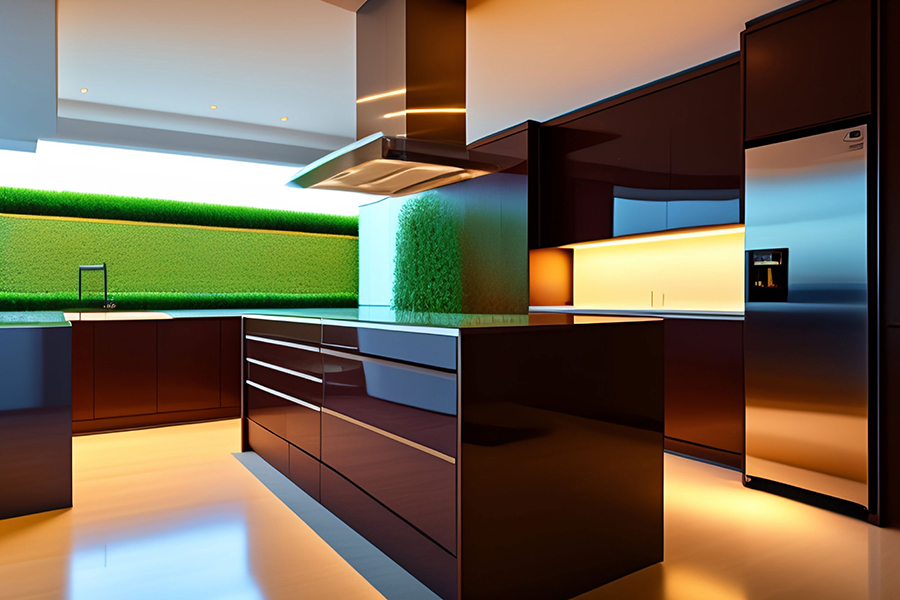
One of the most popular videos on this topic is “Boxing in a Hood Fan Exhaust Duct” by DIY expert Bob Vila. In this video, Bob demonstrates step-by-step how to build and install custom cabinetry around your vent pipe using basic woodworking tools and materials.
The process involves measuring the dimensions of your vent pipe carefully, building wooden frames around it with plywood or MDF boards, attaching them securely to the ceiling joists or wall studs with screws and brackets, then finishing off with paint or decorative trim.
While this method requires some carpentry skills and tools like saws, drills, levels etc., it’s relatively easy for anyone who has done some DIY projects before. Plus you’ll end up with beautiful cabinets that not only conceal but also add storage space in your kitchen!
Remember that safety should always come first when working on any home improvement project involving electrical wiring or ventilation systems.
Conclusion
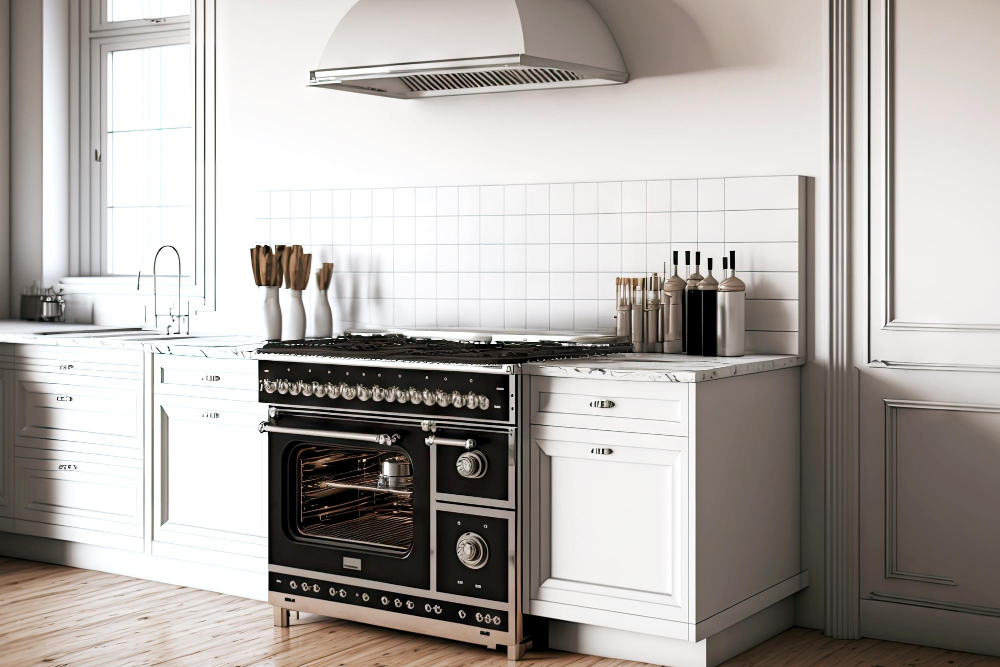
With the right materials and techniques, you can transform your cooking space into an elegant and functional area that reflects your personal style. Whether you choose to install decorative covers or build custom cabinetry around the vent pipe, there are plenty of options available to suit any budget or skill level.
Remember that safety should always come first when working with ventilation systems in your home. If you’re unsure about how to proceed with concealing your kitchen vent pipe safely and effectively, consider consulting with a professional contractor who has experience in this area.
We hope this article has provided some useful insights into how to hide kitchen vent pipes while maintaining functionality and aesthetics. By following these tips and tricks for concealing unsightly vents in creative ways without sacrificing functionally will help make sure that every meal cooked is done so comfortably!
FAQ
How do you hide a range hood vent?
One way to hide a range hood vent is by insetting it in a wall, surrounding it with drywall, and painting the kitchen a single color for a sleek, uncluttered facade.
What are the best materials or methods to conceal a kitchen vent pipe effectively?
The best materials or methods to effectively conceal a kitchen vent pipe include using decorative covers, camouflage paint, or cabinetry that matches the surrounding decor.
Can you incorporate the vent pipe into the kitchen design while still maintaining its functionality?
Yes, the vent pipe can be incorporated into the kitchen design while maintaining its functionality by seamlessly integrating it within the cabinetry or using it as an accent piece to enhance the aesthetic appeal.
Are there any innovative or creative ways to disguise a kitchen vent pipe as a decorative element?
One innovative way to disguise a kitchen vent pipe as a decorative element is to incorporate it into a custom-designed art piece or cover it with a beautifully crafted casing that complements the kitchen’s overall theme.




